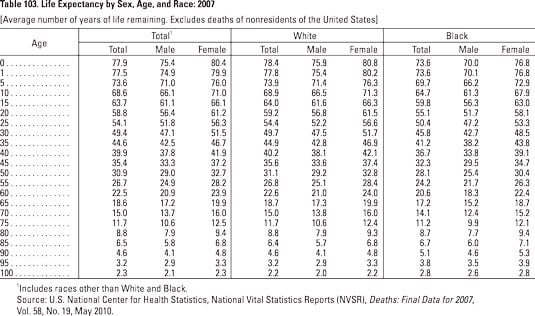Copyright © 2015 AARP
A break‐even analysis compares what you get in your lifetime if you pick different dates to collect Social Security. It’s a way to estimate your total payoff from retiring at an earlier date (with reduced monthly payments) and retiring at a later date (with higher monthly payments). In general, if you die before reaching the break‐even age, and you started collecting benefits at the earlier date, you come out ahead.
If you live beyond your break‐even age, and you started benefits at the later date, you also come out ahead, because those bigger payments add up over time. Where you lose out is if you die before reaching the break‐even age (and you started collecting larger benefits at the later date) or if you die after your break‐even age (and you started smaller benefits at the earlier date).
You should be aware of the break‐even approach, because it’s a common tool recommended by financial planners, and it can provide perspective. But it’s just one consideration. The more you care about how your benefits add up over a lifetime, the greater weight you may give a break‐even calculation. The more you care about ending up with the biggest monthly benefit, the greater weight you may give to delaying your claim for Social Security.

Your break‐even age will vary based on your earnings record and date of birth, but estimating it isn’t too difficult. Here’s how to compare how you’ll come out over your lifetime if you start benefits at age 62 versus your full retirement age:
Determine your full retirement age.
For example, say your full retirement age is 66.
Determine your full retirement benefit at that retirement age by going to the SSA’s Retirement Estimator.
For example, say your full retirement benefit at 66 is $1,500 per month. (The estimator assumes you keep working until age 66.)
Determine your benefit at 62 by going to the SSA’s Retirement Estimator.
In this example, if you claim benefits at 62, your monthly payment is $1,125.
Figure out how much you would take home in the 48 months between age 62 and your full retirement age (66) if you start collecting at age62.
In this example, you’re taking home $1,125 per month, and you’re doing that for 48 months, so $1,125 48 = $54,000.
Now figure out how many months you would have to survive beyond age 66 in order to break even.
In this example, the difference in monthly payments taken at age 62 ($1,125 per month) and 66 ($1,500 per month) is $375. So, divide the amount from Step 4 ($54,000, in this example) by the difference in monthly payments ($375, in this example), and you get the number of months you’d have to survive beyond age 66 in order to break even (inthis case, 144 months, or 12 years). So, in this example, if you live past age 78, you come out ahead by starting your benefits at the full retirement age of 66.
If doing all that math doesn’t appeal to you, and if you were born between 1943 and 1954, here are some general guidelines:
If you’re comparing retirement at 62 with full retirement at 66, your break‐even age is typically around 77 or 78. In other words, if you die earlier, you could end up with more money by claiming early retirement benefits. If you live longer, you could be better off taking your benefits at 66.
If you’re comparing full retirement at 66 with delayed retirement at 70, your break‐even age is typically several months after your 82nd birthday. In other words, if you die before 82 or so, you could end up with more money by beginning benefits at 66. If you live past 82, you could be better off delaying your retirement benefits until you turn 70.
These numbers are only estimates and do not include cost‐of‐living hikes, which could make the break‐even age come earlier. But they can add perspective to your claims decision. What’s most important is for you to consider how long you may live and how Social Security income will fit into the picture.

